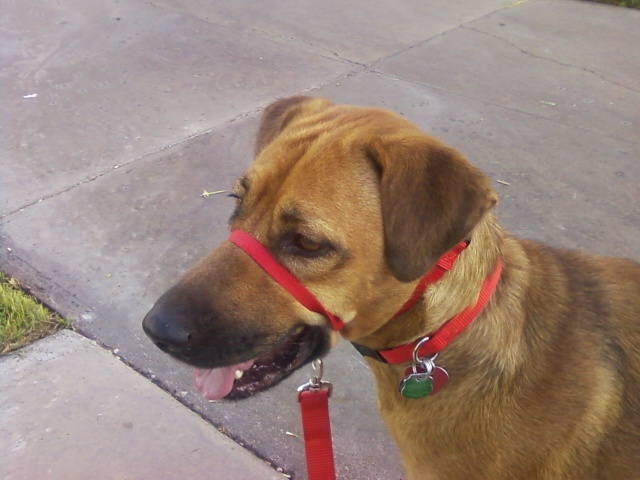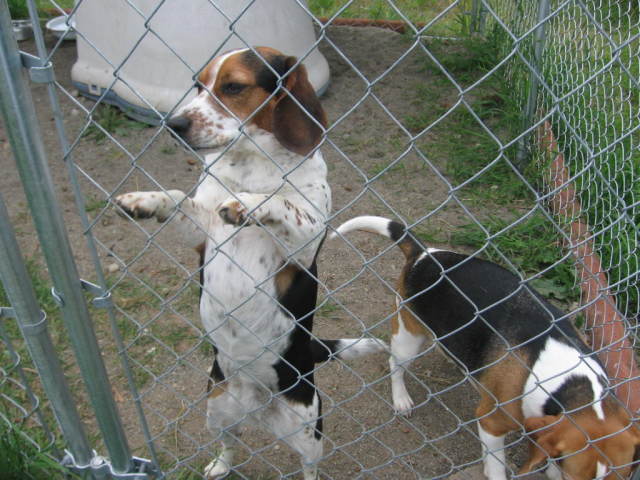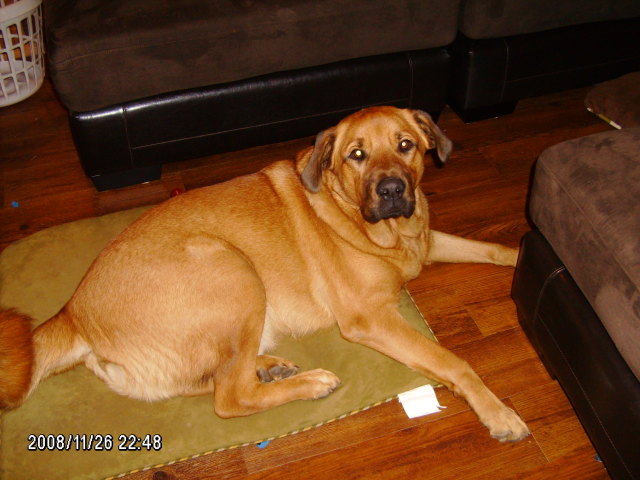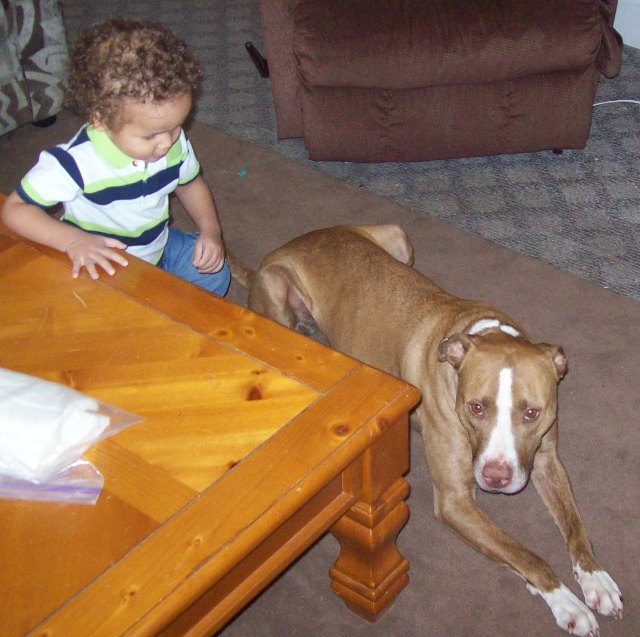QuestionYou sound like dog's best friend...congratulations. I am publisher of an Ezine (monthly) for seniors and baby boomers.
Since you are so knowledgable..would you consider complimenting us with an article you believe this vast audience would like to read?
It can even be about personal experiences, helping others, etc.
Thanks for answering.
AnswerHi Sharon:
I am a very Positive person in working with my dogs and rarely do I use a treat but do believe in them now being so old fashion at going on 67 years young. I run a pack of Shepherds from Germany, they know I am the total Boss and keep them in Control always. Yes, they bicker like kids growing up, but if it gets outta hand, I am there for my two cents of correction immediately.
When I was first learning about canine behavior and training I was adamant about not using food treats. No dog of mine was going to be bribed into doing what I said! It took me a lot longer to really evaluate the use of food as a training tool because I wouldn't even listen to the arguments in favor of the practice. Being stubborn won't help your training skills evolve, being open to other ideas will.
I use methods and tools that are comfortable for me and those that complement my individual style of training. I start all dogs on a flat leather or nylon collar. If we need to graduate to something that allows more control, I use a martingale type collar or a Gentle Leader halter. I never use metal slip, or "choke" collars because I think they carry a higher than average risk of causing tracheal damage, it's difficult to get Mr. and Ms. JQP to use them properly, and, most importantly, I'm not comfortable with using them. The reason I don't use training type collars, as a rule, is that the primary difference between them and a regular flat collar is that they are designed to be corrective. I don't even think about correcting until after I'm sure the dog has learned what I set out to teach him. When we get to the point that the dog knows exactly what "sit" means, and chooses not to, then I might use a collar correction, but I find a leash pop on a flat collar gets their attention just fine.
I once worked with a 9 month old, 100 lb. AmStaff mix that was the happiest dog I've ever seen. Geez, was he happy. He also had no manners at all. None. And, he had the attention span of a potato bug. He was a confident, exuberant and extroverted dog. When he was on a flat collar and I was on the other end of the leash there was no learning going on. There was, however, a good possibility that I was going to be dragged down the street on my butt. He was food motivated, but he'd never learned how to learn, so he thought the name of the game was "knock Debbie over, grab the food, lick her face in thanks". As I said, no learning was going on. A martingale collar would not have prevented him from dragging me all around town and he would have likely broken his neck on a halter, so I decided to use a prong collar. The prong collar calmed him down enough for me to get his attention and to teach him how to learn something new. I'm aware that this worked because it made it uncomfortable (painful?) for him fly to the end of the leash every few seconds. It was, however, a humane, ethical and fair way to get this dog under control long enough to teach him proper leash etiquette and for him to get the hang of learning, in general. The prong collar was replaced with his flat collar after his first lesson. Once he learned how to learn he caught on to new things fast and with enthusiasm and ended up being a very well behaved dog.
If you adjust your attitude and stance to the dog, and keep your tool box of techniques full, you'll do fine.
I recently worked with an adolescent, male Rottie. When he was off leash he was very dog friendly. When he was on leash he was a bozo-head. He was not fearful of other dogs and he was not what I would call dog aggressive. For dogs that are fear aggressive or overtly aggressive towards other dogs I use positive reinforcement to create a conditioned response to seeing another dog. For this dog I didn't think that was necessary. I felt he was just being a bozo-head. A quick pop on the leash (flat collar) combined with a sharp "cut it out!" caused him to sit and look at me with that goofy expression teenaged dogs often have. The one that says "Geez, sorry, lost my head for a moment -- you over it now?"
I am a strong believer in teaching the proper behavior using positive methods rather than using force and compulsion to eliminate undesirable behavior, but I also believe in tailoring the training to the dog. This dog already knew that calm behavior when on leash and around other dogs was rewarding, but he still had moments when liked to puff up his chest. For this particular dog, in this particular circumstance, a combination of knowing what behavior predicted a reward was combined with learning what behavior predicted punishment. I could have used more or better rewards to get him to always offer the correct behavior, but I didn't see the necessity of that. It didn't take beating him with a 2x4, or jerking him around on a training collar to get the idea across that belligerence towards other dogs was not nice. The punishment he did receive (pop on a flat collar, verbal "cut that out") was sufficient to get the message across. Fair, humane, effective.
Not long after that I was working with a Lab mix that would have collapsed into a pile of trembling dog flesh if I had used even the softest of collar corrections. Withholding of reward was the only punishment I used with her and she came around very nicely. Even a stern "no" would have not been a fair or humane way to communicate with that dog at that time. She couldn't cope. She now copes with life, in general, much better than she did before, but it still takes little more than eye contact to correct her.
There might be "one true way" to spiritual enlightenment, but there is no such road that leads to one "right" way to train a dog.
Listen and mix through all the facts given you if they are facts or foe and take what works for you and stick with a method of.
Kind Regards
Patt
WWW.SCHREKNHAUS.COM

 My dog Kiya
Question
Kiya
My new dog Kiya is a 2 yr old German Shep
My dog Kiya
Question
Kiya
My new dog Kiya is a 2 yr old German Shep
 2nd Dog
Question
Winston
Hi, I have a beagle/bassest hou
2nd Dog
Question
Winston
Hi, I have a beagle/bassest hou
 AKC
Question
Bailey and Cocoa
Hi Im Ashley Sommer. I am ten
AKC
Question
Bailey and Cocoa
Hi Im Ashley Sommer. I am ten
 mouthing; pawing, wont drop it
Question
My puppy Trigger
I have a 10 month old LARGE (
mouthing; pawing, wont drop it
Question
My puppy Trigger
I have a 10 month old LARGE (
 my older dog is house broken but not
QuestionQUESTION: I got a 9 yr old dog from a shelter a
my older dog is house broken but not
QuestionQUESTION: I got a 9 yr old dog from a shelter a